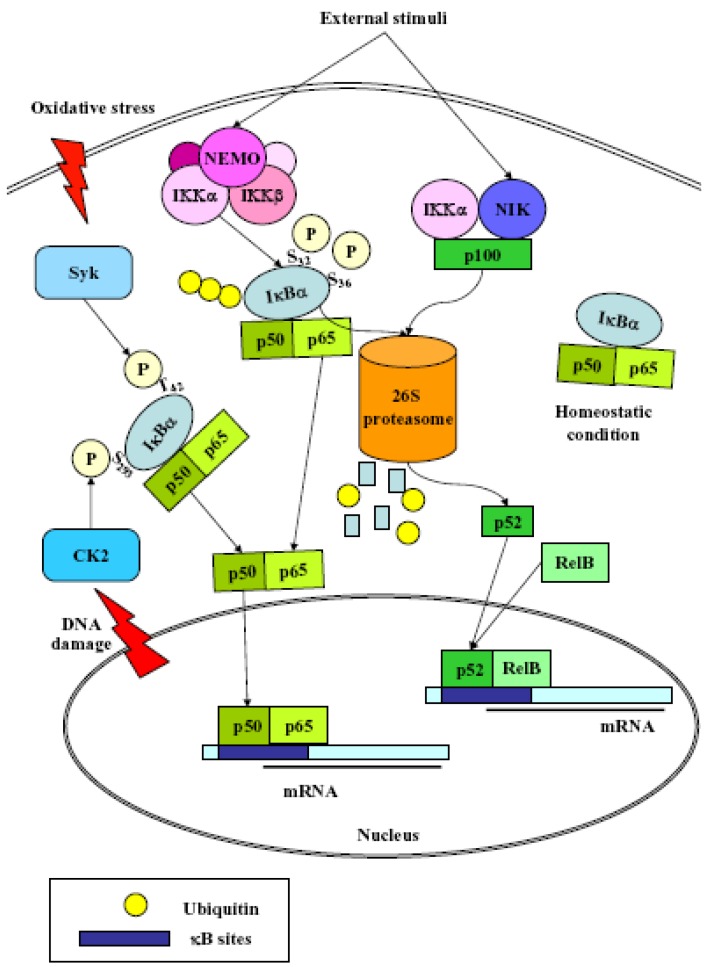Scheme 2.
Proposed mechanisms for NF-κB activation. In basal conditions NF-κB is sequestered in the cytoplasm by IκBα. Upon stimulation, IκBα is rapidly phosphorylated at Ser32 and 36 by the IKK complex and degraded by the 26 S proteasome (classical pathway); DNA damage induces CK2 activation that leads to phosphorylation of IκBα at Ser293 and proteasome degradation (atypical pathway); oxidative stress induces Syk protein tyrosine kinase activation leading to IkBα Tyr42 phosphorylation and proteasome degradation (Oxidative stress-induced pathway). The released NF-κB dimer translocates to the nucleus and activates target genes by binding with high affinity to κB elements. External stimuli induce NIK and IKKα-dependent proteasomal processing of p100 into p52, which translocates to the nucleus and binds to DNA in association with RelB (alternative pathway).

